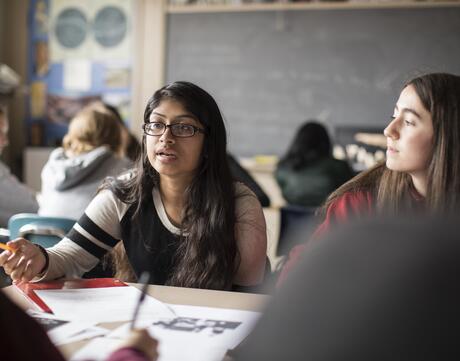
SPAR (Spontaneous Argumentation)
At a Glance
Language
English — USSubject
- Advisory
- Civics & Citizenship
- English & Language Arts
- History
- Social Studies
Grade
6–12Overview
What Is a SPAR Debate?
In this structured debate modeled after an event in forensic competitions, students frame their argument in one minute and then react quickly to their opponents’ ideas. This strategy helps students practice using evidence and examples to defend a position. Because students aren’t given much preparation time, SPAR is most effective when students already have background information about the topic. With practice, students become increasingly comfortable with and proficient in using this method to unearth the “pro” and “con” sides of controversial topics.
Lesson Plans
How to Conduct a SPAR Debate
Variations
Unlimited Access to Learning. More Added Every Month.
Facing History & Ourselves is designed for educators who want to help students explore identity, think critically, grow emotionally, act ethically, and participate in civic life. It’s hard work, so we’ve developed some go-to professional learning opportunities to help you along the way.
Exploring ELA Text Selection with Julia Torres
On-Demand

Working for Justice, Equity and Civic Agency in Our Schools: A Conversation with Clint Smith
On-Demand

Centering Student Voices to Build Community and Agency
On-Demand














